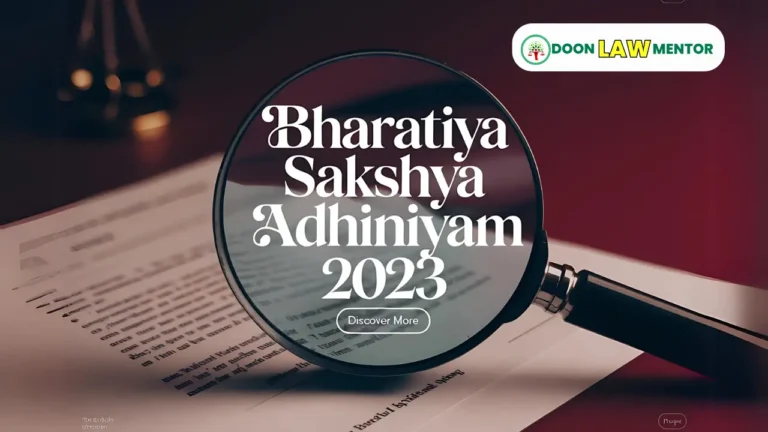The Supreme Court’s directive for 100% Waste Management in Delhi NCR in MC Mehta Case sets a new standard for environmental justice in 2025. This blog explores the ruling’s impact, legal implications, and preparation tips for Judiciary, APO, and JLO aspirants, ensuring you’re exam-ready for 2025.
Table of Contents
Introduction
The Supreme Court of India issued a groundbreaking directive in the ongoing MC Mehta case, mandating 100% waste segregation and management across the National Capital Region (NCR), which includes Delhi, parts of Haryana, Rajasthan, and Uttar Pradesh. This ruling, rooted in decades of environmental litigation led by activist-lawyer MC Mehta, addresses the severe pollution crisis in the NCR, emphasizing the constitutional right to a clean environment under Article 21. For Judiciary, APO, and JLO aspirants preparing for 2025 exams, this decision offers critical insights into environmental law, judicial activism, and administrative accountability. This blog delves into the ruling’s background, legal implications, and practical applications for your exam preparation.
100% Waste Management in Delhi NCR in MC Mehta Case
Historical Context
The MC Mehta case, formally known as MC Mehta v. Union of India, is a series of public interest litigations (PILs) initiated by environmental lawyer MC Mehta in the 1980s to combat pollution in India. The first significant petition, filed in 1985, addressed the pollution of the Ganga River, but subsequent filings expanded to air pollution, vehicular emissions, and waste management in the NCR. Over the years, the Supreme Court has issued numerous directives, including the 1996 order for CNG vehicles in Delhi and the 2015 ban on old diesel vehicles. The 2025 directive for 100% waste management builds on this legacy, tackling the NCR’s mounting waste crisis, estimated at 13,000 tonnes per day in Delhi alone.
Key Details
On April 26, 2025, the Supreme Court, hearing a plea under the MC Mehta umbrella case, ordered all NCR municipal corporations to achieve 100% waste segregation at source and ensure scientific disposal by December 31, 2025. Key points of the ruling include:
- Mandatory segregation of wet, dry, and hazardous waste at the household level.
- Establishment of decentralized waste processing units in every NCR district.
- Fines for non-compliance, ranging from ₹5,000 for individuals to ₹1 lakh for bulk waste generators.
- A monitoring committee, led by a retired High Court judge, to oversee implementation and report monthly progress.
- Integration of informal waste pickers into the formal system to enhance recycling rates.
The directive responds to Delhi’s air quality index (AQI) reaching hazardous levels (above 400) consistently in 2024, exacerbated by landfill fires at sites like Ghazipur and Bhalswa, which contribute to 30% of the city’s air pollution.
Legal and Geopolitical Implications
The ruling is grounded in Article 21 of the Indian Constitution, which guarantees the right to life, interpreted to include the right to a clean environment (Subhash Kumar v. State of Bihar, 1991). It reinforces the Polluter Pays Principle and the Precautionary Principle, both upheld in Vellore Citizens Welfare Forum v. Union of India (1996). The directive also invokes the Solid Waste Management Rules, 2016, mandating segregation and processing. Geopolitically, it pressures NCR states to coordinate, highlighting inter-state environmental governance challenges under India’s federal structure (Article 256). This ruling may influence other regions facing similar waste crises, setting a national precedent for judicial environmental oversight.
Challenges and Concerns
- Implementation Gaps: NCR municipalities lack infrastructure; only 20% of Delhi’s waste is currently processed scientifically.
- Public Awareness: Many residents are unaware of segregation protocols, risking non-compliance.
- Resource Constraints: Decentralized units require significant funding and land, which NCR states struggle to provide.
- Inter-State Coordination: Differing priorities among Delhi, Haryana, Rajasthan, and Uttar Pradesh may delay action.
Potential Outcomes or Future Impact
Successful implementation could reduce landfill use by 50%, cut air pollution by 15%, and improve public health, aligning with India’s Swachh Bharat Mission goals. Failure might lead to contempt proceedings against NCR authorities, further litigation, or public unrest. This directive may inspire similar interventions in other polluted regions like Mumbai or Bengaluru, strengthening environmental jurisprudence.
Why This Matters for Judiciary, APO, and JLO Aspirants
This ruling is crucial for aspirants, offering insights into environmental law under Article 21, judicial activism via the MC Mehta case, and inter-state governance challenges. It’s a key topic for Prelims (memorize facts like the 2025 directive date and waste stats), Mains (essay on judicial environmental roles), and Interviews (discuss pollution’s public health impact), enhancing practical exam application in environmental and constitutional law questions.
Challenges and Solutions
- Challenge: Complexity of Environmental Law for Aspirants
- Solution: Study landmark cases like Vellore Citizens Welfare Forum and the Solid Waste Management Rules, 2016, to build foundational knowledge.
- Challenge: Understanding Inter-State Dynamics
- Solution: Review Article 256 and federalism principles through case laws like State of West Bengal v. Union of India (1963).
- Challenge: Keeping Up with Implementation Updates
- Solution: Follow Supreme Court monitoring committee reports and environmental news for real-time insights.
Conclusion
The Supreme Court’s directive for 100% waste management in the NCR, issued on April 26, 2025, in the MC Mehta case, is a milestone in environmental justice, reinforcing the right to a clean environment under Article 21. For Judiciary, APO, and JLO aspirants, this ruling offers a wealth of material on environmental law, judicial activism, and inter-state governance, making it a must-know topic for 2025 exams. By understanding its legal basis and practical implications, aspirants can enhance their preparation and contribute to a sustainable future as legal professionals.
Call-to-Action
Master the 100% Waste Management in Delhi NCR in MC Mehta Case with https://doonlawmentor.com/courses! Follow @doonlawmentor on Instagram for daily updates! #JudiciaryExam2025 #EnvironmentalLaw
FAQs
- What is the MC Mehta case?
A series of PILs filed by MC Mehta since 1985 to address pollution issues in India, including the Ganga, air quality, and waste management. - When did the Supreme Court issue the 100% waste management directive for NCR?
April 26, 2025. - What is the daily waste generation in Delhi as per recent estimates?
13,000 tonnes per day. - What are the key requirements of the Supreme Court’s 2025 directive?
100% waste segregation, decentralized processing units, and fines for non-compliance. - What is the deadline for achieving 100% waste management in NCR?
December 31, 2025. - Which constitutional article supports the right to a clean environment?
Article 21 (right to life). - What percentage of Delhi’s air pollution is caused by landfill fires?
30%. - What is the fine for individuals who fail to segregate waste in NCR?
₹5,000. - What is the fine for bulk waste generators who fail to comply?
₹1 lakh. - Which regions are included in the NCR for this directive?
Delhi, parts of Haryana, Rajasthan, and Uttar Pradesh. - What is the AQI level in Delhi mentioned in the context of this ruling?
Above 400 (hazardous) in 2024. - Who is overseeing the implementation of the SC directive?
A monitoring committee led by a retired High Court judge. - What principles did the Supreme Court invoke in this ruling?
Polluter Pays and Precautionary Principles. - What previous SC orders under the MC Mehta case are notable?
1996 CNG vehicle mandate and 2015 ban on old diesel vehicles in Delhi. - What law governs waste management in India?
Solid Waste Management Rules, 2016. - How does this ruling impact inter-state governance?
It requires coordination among NCR states under Article 256. - What case expanded Article 21 to include environmental rights?
Subhash Kumar v. State of Bihar (1991). - How can aspirants use this case in mains exams?
To discuss judicial activism, environmental rights, or inter-state cooperation. - What is the expected reduction in landfill use if the directive is successful?
50%. - How much can air pollution decrease with proper waste management in NCR?
15%.
#Doonlawmentor #wastemanagement #wastemanagementoverhaulindelhi #SupremeCourt #MCMehtaCase #EnvironmentLaw #NCRPollution #WasteManagement #SolidWasteRules2016 #JudiciaryPrep #wastemanagementbusiness #wastemanagementproject #Greenjustice #SustainableDevelopment #LawStudentsIndia










